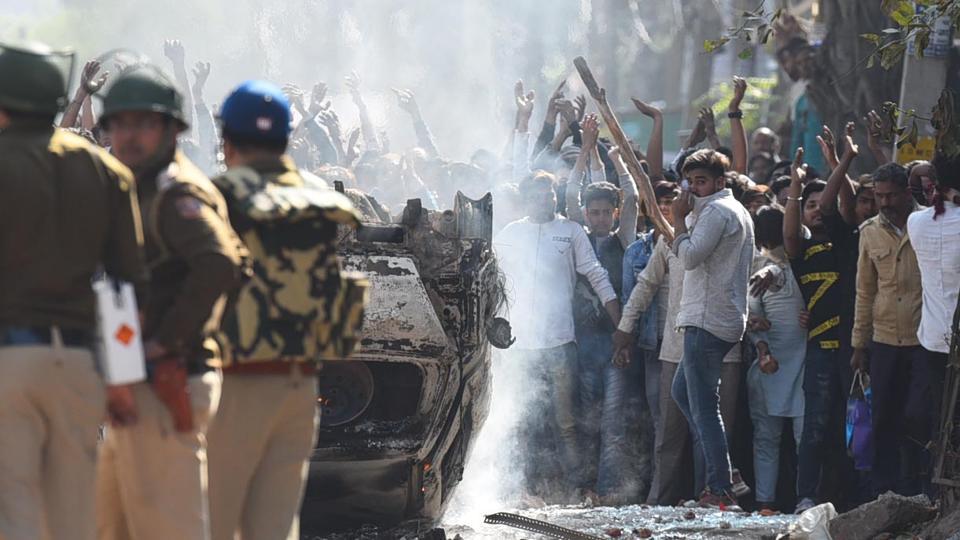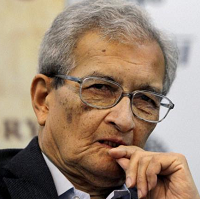Bilal9
ELITE MEMBER

- Joined
- Feb 4, 2014
- Messages
- 26,569
- Reaction score
- 9
- Country
- Location
Delhi riots: Outsiders came in trucks carrying bricks and bags, allege locals
Bhajanpura, Maujpur, Seemapuri residents claim only people from outside could unleash such violence.

Protesters take cover from a burning car during violent clashes between anti and pro CAA demonstrations, at Jaffarabad, near Maujpur, New Delhi.
On Sunday evening, Om Veer, a resident of north-east Delhi’s Bhajanpura was sitting outside his shop on Pushta Road when he saw around 10 trucks being parked on the service lane carrying around 70 men with backpacks. All the men were in the 20 to 30 age-group, and they were all outsiders, Veer said.
Just 20 minutes later, another truck followed, carrying construction debris and pieces of bricks. Though Veer could not draw a connection between the two immediately, he began getting suspicious when he woke up to the news of violent communal clashes and stone-pelting across north-east Delhi the next morning.
“These people were not locals. They did not look like labourers. All were young men. Who knows what they were carrying in their backpacks? It could be stones, it could be weapons,” Veer said.
Even as Uttar Pradesh Police sealed three border roads adjoining north-east Delhi, several residents claim that unruly elements continue to enter areas around Seemapuri, Bhajanpura, Maujpur and Jafrabad using smaller routes. Though three primary entry points -- Laal Bagh, DLF embankment road in Loni, and Tulsi Niketan border in Sahibabad -- are now protected by the police from both sides, there are several internal roads from where cars and two-wheelers can access the Capital.
Some of these roads, especially around Bhajanpura and Maujpur, are also wide enough for medium-sized trucks.
On Wednesday, Delhi chief minister Arvind Kejriwal, in his address at the Delhi assembly, had also put the blame of the violence on “outsiders”.
“Delhi’s people are peace-loving, everyone wants peace and nobody wants riots. We strive to make a better Delhi for our children. Common people of Delhi are not involved in the riots. People from outside Delhi, political elements, and miscreants are responsible for the rioting,” Kejriwal said.
Even on Friday, residents in Seemapuri claimed that they had seen outsiders being brought into Delhi to insight fresh communal clashes that have already claimed 42 lives.
Mohammad Irfan, a resident of Seemapuri, said that he was guarding his colony gates with his neighbours around 2am on Friday when he saw three vehicles, with Haryana registration numbers, come their way. His colony is less than 2km away from UP’s Shaheed Nagar, and the route is not secured by any security agency.
“We could not see how many people there were in these vehicles, but when the residents surrounded them, they quickly turned their vehicles and went away,” said Irfan.
Thirty two-year-old Neelam Mishra, a resident of Zero Pushta, also bore witness to over a dozen motorcycles zoom through her neighbourhood late Tuesday night. He said that the Hindus and Muslims have lived in this neighbourhood peacefully for generations and any political interference cannot instigate neighbours against each other.
“Do you think children who have grown up together will murder and set each others’ houses on fire? These riots were orchestrated and these people were brought from outside. If these people were local people then someone should recognise them here,” Mishra said.
As these allegations mounted, Delhi traffic police officers said that it is difficult to doubt a heavy vehicle entering the city borders only because it is carrying people, because vehicles carrying labourers from the neighbouring states often go in and out of the city.
“Accusing police just because some vehicles managed to enter the city is wrong. Many trucks enter Delhi from UP, especially from these borders, carrying men who work in factories or taken as labourers by contractors,” a traffic officer from the area said, asking not to be named.
MS Randhawa, Delhi Police spokesperson said that the police was alert and was manning each of the riot-hit areas with a close watch. He said that the borders are tightly protected.
“The situation is getting better but we are looking out for any unruly elements that could disrupt peace,” Randhawa said.
Bhajanpura, Maujpur, Seemapuri residents claim only people from outside could unleash such violence.

Protesters take cover from a burning car during violent clashes between anti and pro CAA demonstrations, at Jaffarabad, near Maujpur, New Delhi.
On Sunday evening, Om Veer, a resident of north-east Delhi’s Bhajanpura was sitting outside his shop on Pushta Road when he saw around 10 trucks being parked on the service lane carrying around 70 men with backpacks. All the men were in the 20 to 30 age-group, and they were all outsiders, Veer said.
Just 20 minutes later, another truck followed, carrying construction debris and pieces of bricks. Though Veer could not draw a connection between the two immediately, he began getting suspicious when he woke up to the news of violent communal clashes and stone-pelting across north-east Delhi the next morning.
“These people were not locals. They did not look like labourers. All were young men. Who knows what they were carrying in their backpacks? It could be stones, it could be weapons,” Veer said.
Even as Uttar Pradesh Police sealed three border roads adjoining north-east Delhi, several residents claim that unruly elements continue to enter areas around Seemapuri, Bhajanpura, Maujpur and Jafrabad using smaller routes. Though three primary entry points -- Laal Bagh, DLF embankment road in Loni, and Tulsi Niketan border in Sahibabad -- are now protected by the police from both sides, there are several internal roads from where cars and two-wheelers can access the Capital.
Some of these roads, especially around Bhajanpura and Maujpur, are also wide enough for medium-sized trucks.
On Wednesday, Delhi chief minister Arvind Kejriwal, in his address at the Delhi assembly, had also put the blame of the violence on “outsiders”.
“Delhi’s people are peace-loving, everyone wants peace and nobody wants riots. We strive to make a better Delhi for our children. Common people of Delhi are not involved in the riots. People from outside Delhi, political elements, and miscreants are responsible for the rioting,” Kejriwal said.
Even on Friday, residents in Seemapuri claimed that they had seen outsiders being brought into Delhi to insight fresh communal clashes that have already claimed 42 lives.
Mohammad Irfan, a resident of Seemapuri, said that he was guarding his colony gates with his neighbours around 2am on Friday when he saw three vehicles, with Haryana registration numbers, come their way. His colony is less than 2km away from UP’s Shaheed Nagar, and the route is not secured by any security agency.
“We could not see how many people there were in these vehicles, but when the residents surrounded them, they quickly turned their vehicles and went away,” said Irfan.
Thirty two-year-old Neelam Mishra, a resident of Zero Pushta, also bore witness to over a dozen motorcycles zoom through her neighbourhood late Tuesday night. He said that the Hindus and Muslims have lived in this neighbourhood peacefully for generations and any political interference cannot instigate neighbours against each other.
“Do you think children who have grown up together will murder and set each others’ houses on fire? These riots were orchestrated and these people were brought from outside. If these people were local people then someone should recognise them here,” Mishra said.
As these allegations mounted, Delhi traffic police officers said that it is difficult to doubt a heavy vehicle entering the city borders only because it is carrying people, because vehicles carrying labourers from the neighbouring states often go in and out of the city.
“Accusing police just because some vehicles managed to enter the city is wrong. Many trucks enter Delhi from UP, especially from these borders, carrying men who work in factories or taken as labourers by contractors,” a traffic officer from the area said, asking not to be named.
MS Randhawa, Delhi Police spokesperson said that the police was alert and was manning each of the riot-hit areas with a close watch. He said that the borders are tightly protected.
“The situation is getting better but we are looking out for any unruly elements that could disrupt peace,” Randhawa said.






















